36 Best Content Distribution Platforms To Know About

Table of Contents
- What Is Content Distribution?
- Why Should You Promote Your Content?
- Best Content Distribution Platforms
- Key Takeaways
- Conclusion
- FAQs
There is no point in creating content that does not reach your target demographic. Thus, it becomes imperative to channel content through the best content distribution platforms to reach your target audience. Content distribution is most effective when you create meaningful, engaging, relevant, and actionable content targeted at the right audience. Using the best content distribution platforms to disseminate your content makes your distribution efforts more manageable and more effective.
What Is Content Distribution?
Content distribution means disseminating content to select target audiences through various media formats and channels. There are three categories under which all these content distribution platforms fall.
Paid media comprises the content distribution channels you need to pay for to place your ads, whether social media or pay-per-click (PPC) advertising. Paying for your ads is a quick way for your brand to get exposure. Owned media comprises content distribution channels you have absolute control over. They are essentially property you own; examples include websites, email, and blogs. Earned media relies on other people for distributing content and includes product reviews, guest posts, testimonials, etc. This is the most organic way of content distribution, and it increases your brand’s credibility tenfold.
Choosing a web content distribution platform that best suits your brand’s needs will help you boost your distribution efforts. Without the right content distribution platforms, it is impossible to promote your content to many people who make up your target audience.
Why Should You Promote Your Content?
You spend hours creating a blog post, and the process involves intense research and writing it flawlessly with no plagiarism. Now, you go ahead and publish it. While creating content is extremely important, promoting it plays an equally significant role. That’s why you need a good content distribution strategy and the best content distribution platforms to promote the content that you created painstakingly.
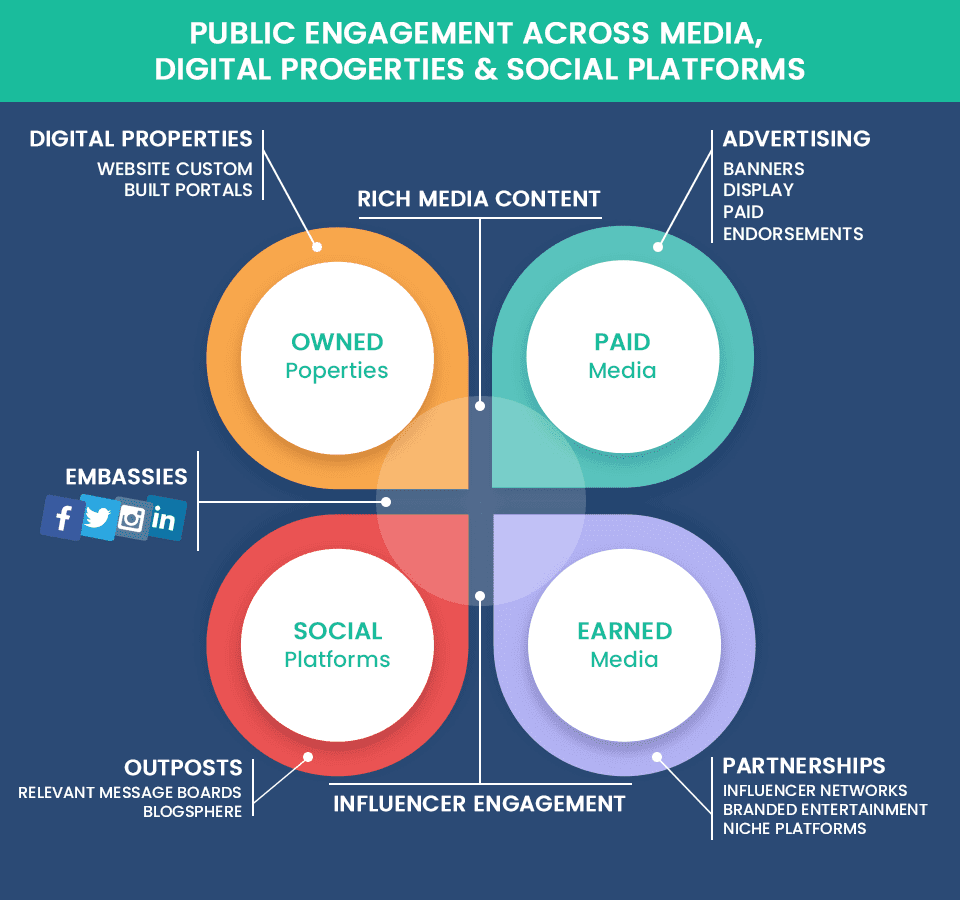
Your content will play a crucial role in drawing traffic and creating brand awareness. There’s no point in publishing half a dozen blogs every day if it is not reaching the right people. You can make the best use of the content you created by making it engaging and promoting it appropriately using content distribution tools.
You probably pay for your brand’s advertising and list your business on major listing sites. You certainly have a social media page and share updates regularly. All this for what purpose? The primary goal is to be visible and create better brand awareness.
You can use the content at hand to attract a new audience base or repurpose it to interact with your existing target audience. There are many reasons why you should promote your content using content distribution tools.
It helps create brand awareness, and more people recognize your brand. You own your blog, social media profiles, and website. Hence, you have the liberty to share information on any of them. When you share your blog posts on web content distribution platforms, your brand awareness boosts, with chances of being seen by new people increasing on every channel. What’s more is that new users may share it with their peers, making your content even more widespread.
It is easy to jump into the conversation and interact with your target audience. You will become familiar with your audience, and your brand may keep popping up during searches made by customers because your content is already present on the internet. Content distribution platforms make your content more visible to your target demographic. Sharing your content on social media only expands your reach further.
Only content that’s seen can be shared. The more you promote your content, the more people get to see it and share it. A quick like and share or a prompt retweet puts your content in front of a new set of people. In time, you can automate your content distribution strategy with email newsletters.
Best Content Distribution Platforms
The essence of content promotion and distribution is sharing content that’s informative, valuable, unique, relevant, and, most importantly, actionable. Your content should be viewed by more people online and by people looking for the same content, with the hope that it offers the best solution. Here’s a handy list of content distribution tools that will help boost your web content distribution efforts:
1. Buffer
Buffer is one of the best content distribution tools that provide the simplest means to share content on social media platforms such as Facebook, Instagram, LinkedIn, Twitter, etc. All it takes is one click to accomplish the task. What’s more, you have the liberty to have your content queued and scheduled to appear at specific times. Adding images or videos makes your old content look new, and gives Buffer a fresh lease of life. You can do this right from the Buffer dashboard. You can measure your metrics using Buffer analytics and tweak your campaigns when needed.
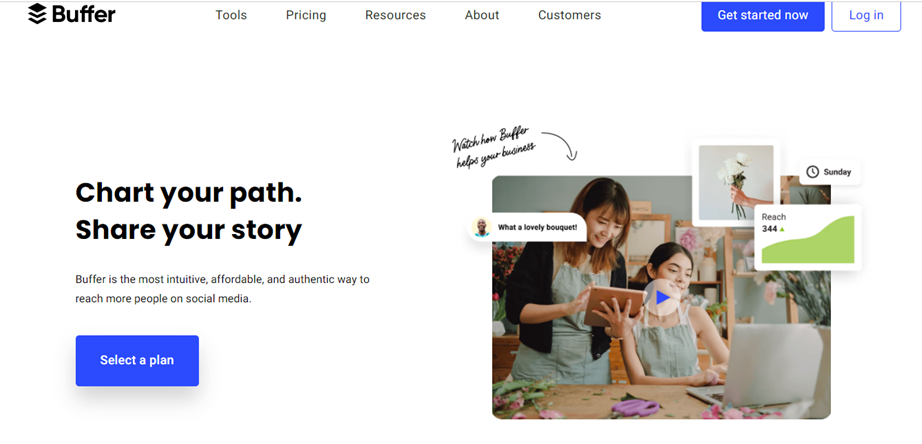
2. MeetEdgar
Who would want to discard all their previously published social media posts? Most certainly not you if you can help it. That’s where MeetEdgar comes into the picture and makes it easy to repost archived content on all social media platforms. An efficient web content distribution platform, MeetEdgar, is quick and easy. It comes to your aid when your team is running short on content. It not only helps you save precious time you would have spent on creating new content, but it also ensures your continued presence on social media, which is essential to remain fresh in the minds of your target audiences. You can even schedule posts for upload with this tool.
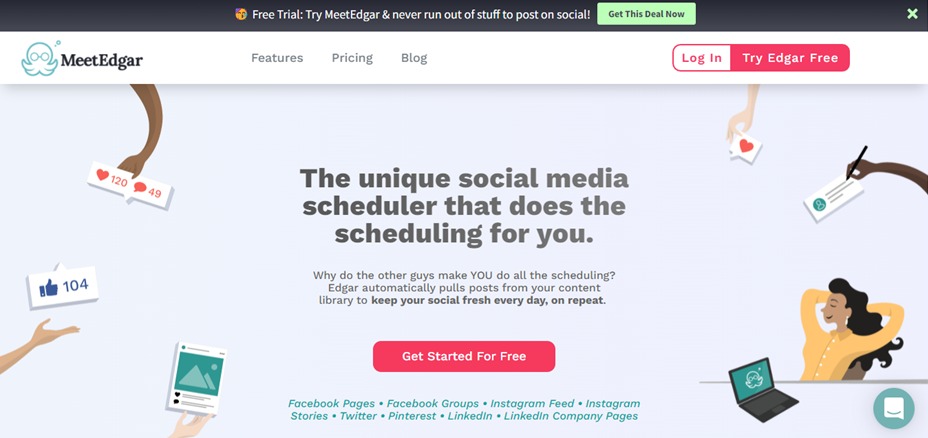
3. WiseStamp
If your business demands that you write more messages, WiseStamp is one of the best content distribution tools for the job. Besides sharing your information, you can also share your social media account details and email signature. You can leave a call to action (CTA) button as a link to your Twitter handle. You can have CTAs at the end of your blog posts and link them via RSS feeds.
With WiseStamp, you can create and manage your email signature seamlessly. Using WiseStamp would be an excellent content distribution strategy to leave your brand’s imprints in the minds of your customers.
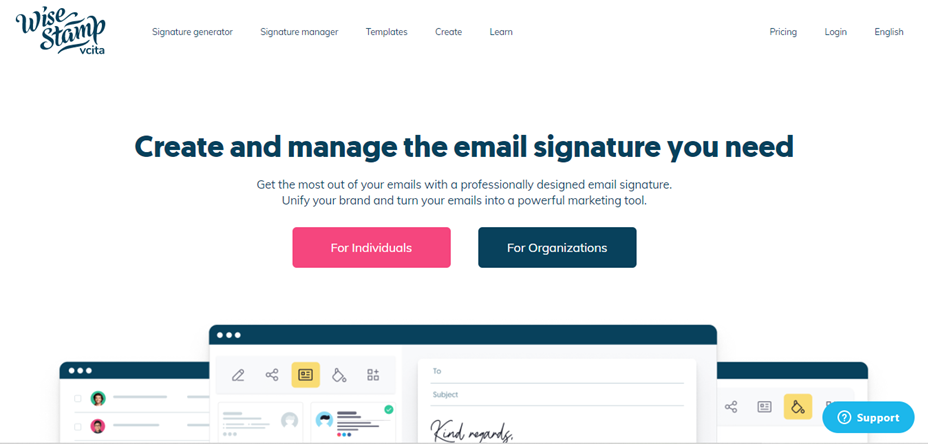
4. Goodbits
Goodbits is another content distribution tool that lets you share your content with your target audience via email newsletters. You can leverage the long hours spent on content creation by automating content from RSS feeds, Twitter, and all the content posted on Pocket, Slack, and the ubiquitous Facebook. You can easily collect content, and you’ll love the drag-and-drop editor that lets you manually collect information. You can also customize your mailing list when using Good bits.
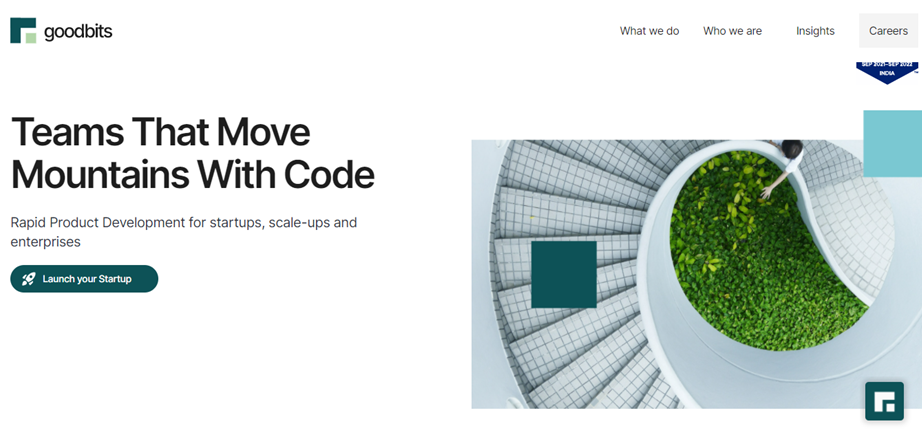
5. Mailchimp
For easy and successful management of email campaigns, almost all marketers use the automated content distribution services offered by Mailchimp. Mailchimp lets you manage your subscribers and helps send email newsletters to every user in your contact list. What’s more, you can track and monitor the results of your campaign using this content distribution channel. You can use it to automate and distribute all your new posts. And you can rely on your analytics reports to track all emails sent as part of a campaign and apply the data to enhance your future campaigns. Mailchimp is the leading brand in email distribution and an essential tool for content distribution, especially automated email campaigns.
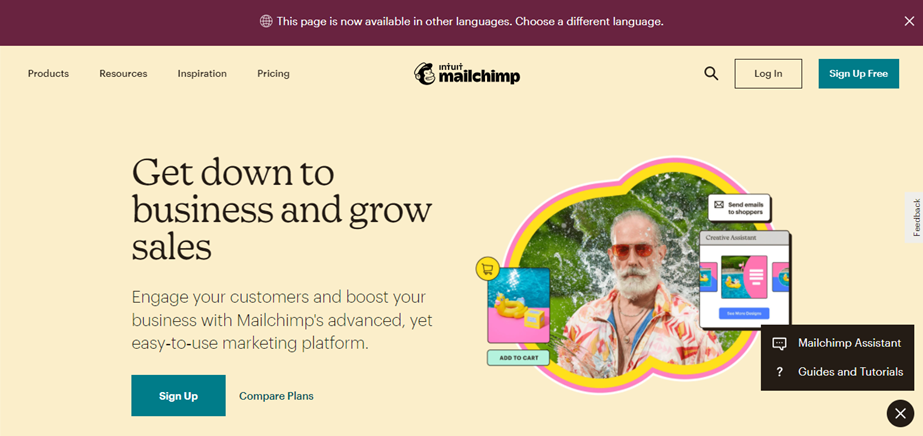
6. SumoMe
SumoMe is a WordPress plugin with several tools that come in handy for distributing earned and owned media. SumoMe has excellent content distribution tools for owned media, such as giveaway widgets and a sign-up bar, which helps create your email lists. For earned media, there is a tool known as “Share,” which helps track users responding to your ads and helps redistribute your content through more than a dozen social media networks. SumoMe also features heat maps to keep track of the clicks made by visitors and is great for placing a CTA at strategic points in your content.
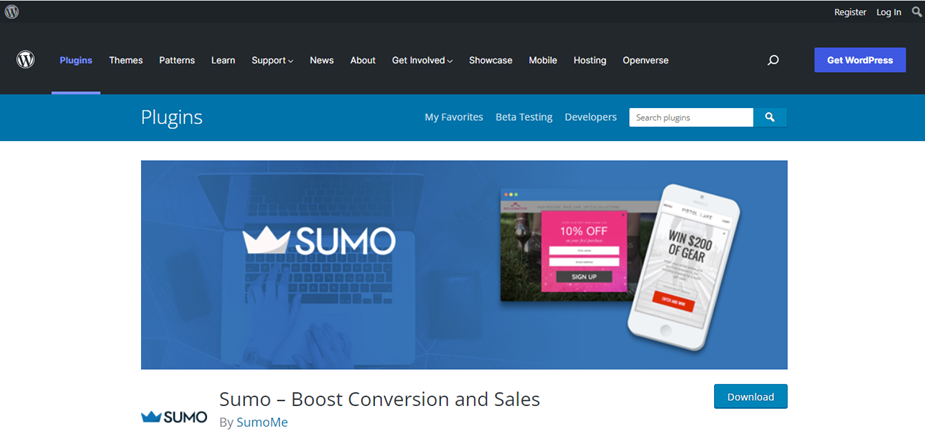
7. Constant Contact
As the name signifies, this content distribution tool helps you remain in constant touch with your audience through email distribution. The unique drag-and-drop feature lets you upload images and other branding content to email templates and share them with your customers. The email sign-in form helps you gain new customers through any of your owned media properties. You can automatically transform emails into social media posts using Constant Contact and build your own social media communities to increase your reach.

8. Click to Tweet
This is a handy content distribution tool as it lets you share your content, and you can also create links to all your posts and announce product launches. As soon as a customer clicks on the link, your original message is automatically transferred to the Twitter compose page. It makes it a lot easier for your members on Twitter to share your information without having to type. This easy feature makes it possible for your launch to go viral on social media, especially Twitter and spread the news to more people in one go.
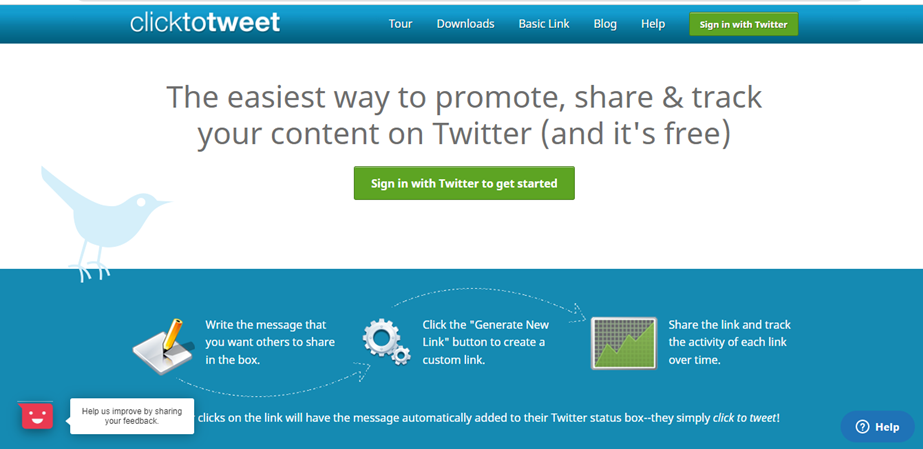
9. Medium
The co-founder of Twitter created Medium. This efficient content distribution platform helps in paid and earned content distribution with no limitation on the length of posts. Medium is used by over 80 million people worldwide. Having access to this active audience is gold for content distributors.
The atmosphere on Medium is relaxed with no need to rush things, and it pays to use in-depth content that’s both engaging and informative. Your posts should match the mood on this network. Popular multinational companies using medium include Starbucks, BMW, Slack, Intel, and more.
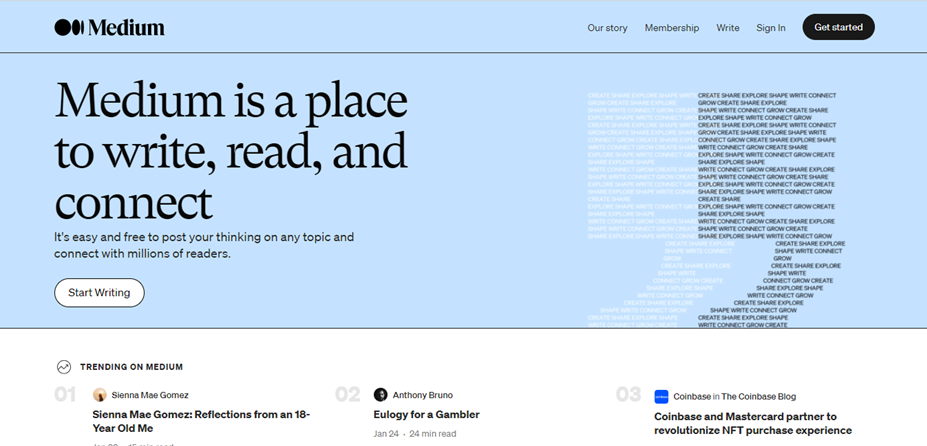
10. LinkedIn Publisher
LinkedIn Publisher is one of the handiest content distribution tools that helps a brand reach more users. LinkedIn is a platform frequented by professionals, and relevant content is constantly viewed and re-shared promptly. Many posts have gone viral on LinkedIn and shared on other social media platforms from there. The homepage features a “Publish a Post” button, and clicking on the button lets you upload images and content. You can also write directly on the page and hit “Publish” to go live. Many blogs are posted on LinkedIn with CTA buttons that lead your readers to your website’s landing pages.
11. Facebook Notes
Facebook’s Notes feature lets you publish text and images. You can post content from your profile or business page. You can summarize a long blog post that readers might skip and share it as a note. Each of these notes will link back to the blog post, giving your readers the chance to read the entire blog on your website. It is easy to find Notes on Facebook: simply go to your profile and look for the “More” tab. As well as promoting your business or personal profile, you can drive traffic to your website with Notes. It is a helpful content distribution tool. All you need to do is link your Note to the landing page on your website.
12. Hootsuite Amplify
As the name suggests, this content distribution tool lets you amplify your content by pushing notifications about fresh content to your associates, colleagues, and employees, giving them a chance to share it with their peers through their social media accounts. This tool is ideal for companies with a large employee base, as it helps with distributing content more widely and in one go.
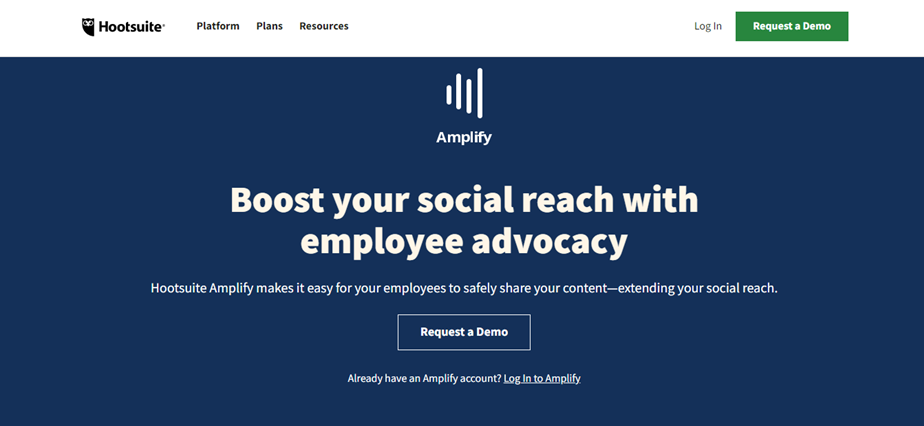
13. SlideShare
SlideShare is a handy content distribution tool that lets you share content as a series of slides (slideshow). With millions of users worldwide, your content has excellent potential to reach a large audience base. Besides PowerPoint presentations, you can also share your videos and infographics through the same tool.
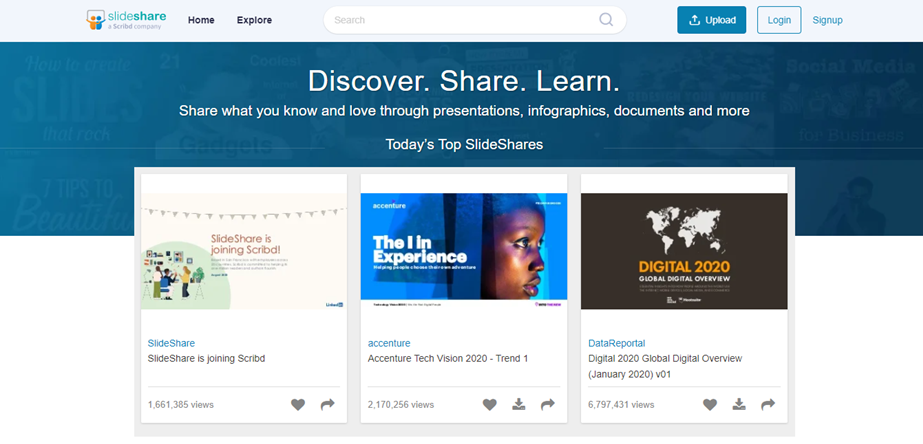
14. OnePress Social Locker
With this tool, you can control what content people can see. More specifically, only the later-published content. If you use this content distribution tool, you can lock any social media content so that readers can only access it after they have shared it on Twitter and Facebook.
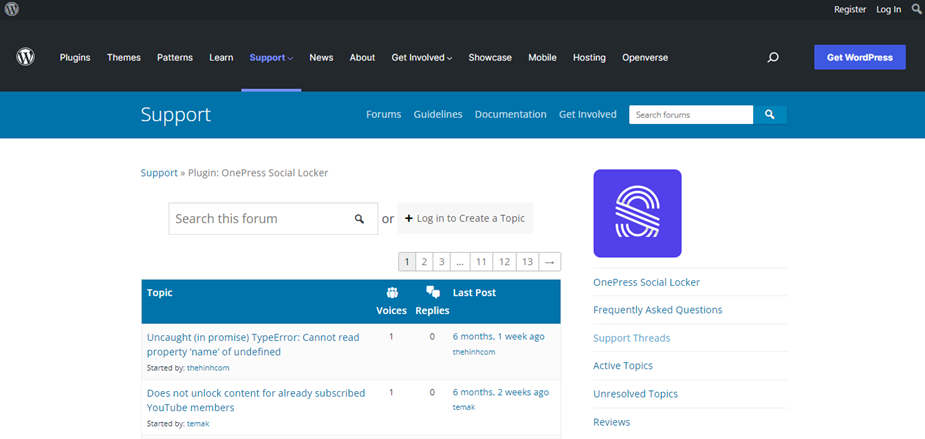
15. Help a Reporter Out (HARO)
HARO is one of the most effective content distribution platforms around the world. HARO is used to share more than 50,000 articles every year on leading publications such as Reuters, Chicago Tribune, The New York Times, etc. It presents an excellent opportunity for content distributors to locate relevant topics related to their domain and contact a journalist for distribution. It is highly effective to establish a relationship with such writers and promote your website through the articles published by such big media houses.
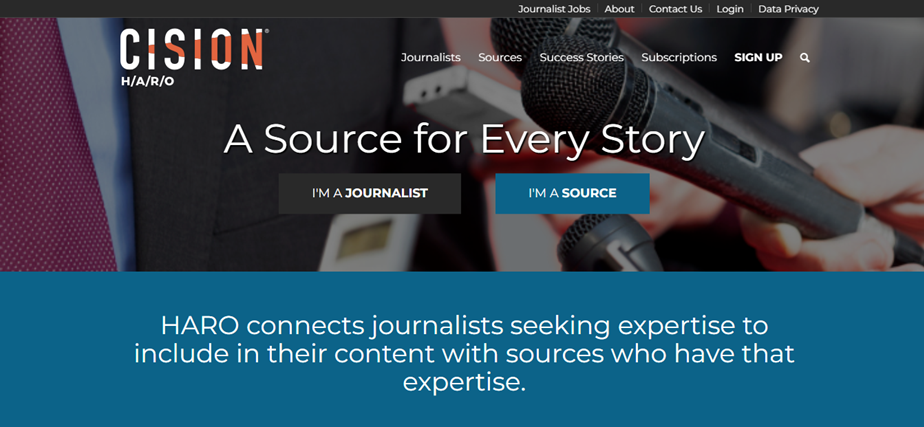
16. PR Newswire
As the name suggests, this content distribution tool is an excellent means to share newsworthy content, including exciting announcements, upcoming events, breaking news, and any other important information regarding your brand, to various sources. You need to sign up on PR Newswire and have your account authorized to assist your promotions. There’s excellent potential to distribute your content on close to 200,000 media sources, and this tool is one of the handiest to promote content about your company and brand.
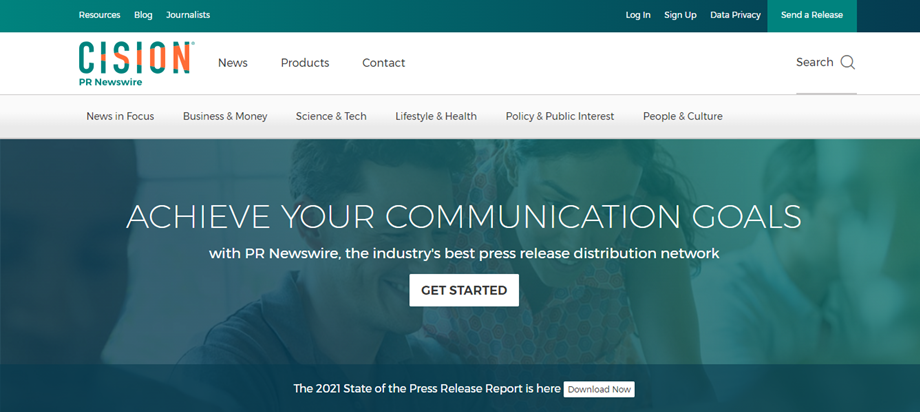
17. Listly
This is an easy-to-use content distribution tool, especially if you need to build lists in a specific area and publish them. Listicles are a popular form of content as the format is easily scannable, and sharing it is also easy. In addition to building lists related to your niche, this tool is also helpful in getting your content the visibility it needs.
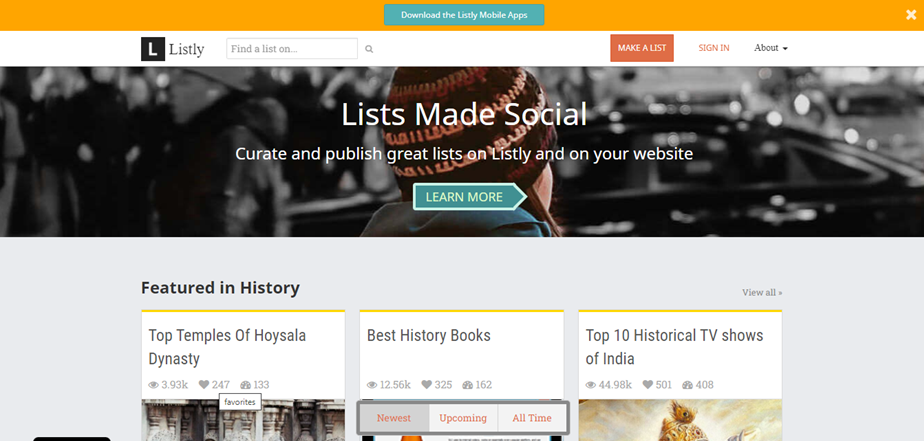
18. NinjaOutreach
Influencers have a way with their followers and help cement relationships with visitors on your website. They help share your content with a large following, and the chances of publishing as a guest blogger also exist. NinjaOutreach is an excellent content distribution tool for popularizing and promoting your content through influencers.
This content distribution tool can capture commonly used phrases to locate influencers, make convenient lists, and create emails using inbuilt templates. You can send them to recipients in your contact list within seconds, thus eliminating the need for more complicated spreadsheets or multiple tools for managing your outreach endeavors.
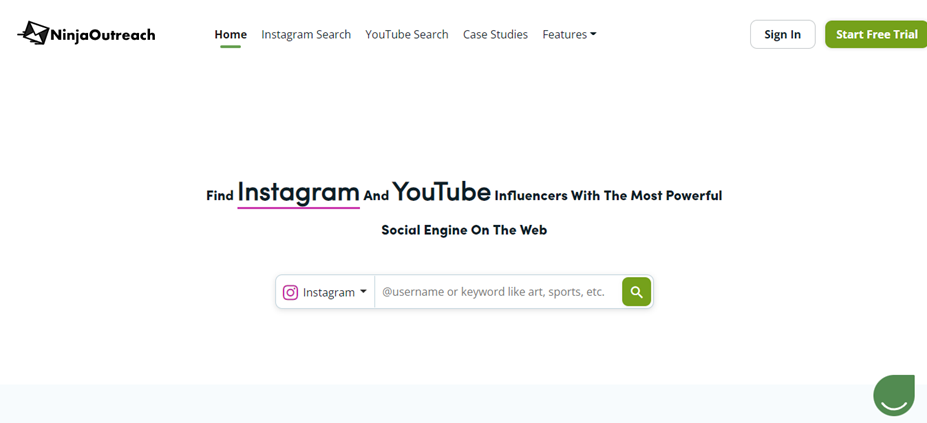
19. Contently
This content distribution platform can be easily used by writers, content specialists, and enterprises. It is an excellent option for freelancers to create portfolios and circulate them to prospective clients. On the other hand, enterprises can find some of the best writers to write their content, which Contently can later distribute on their behalf. Contently has an impressive list of clients too.
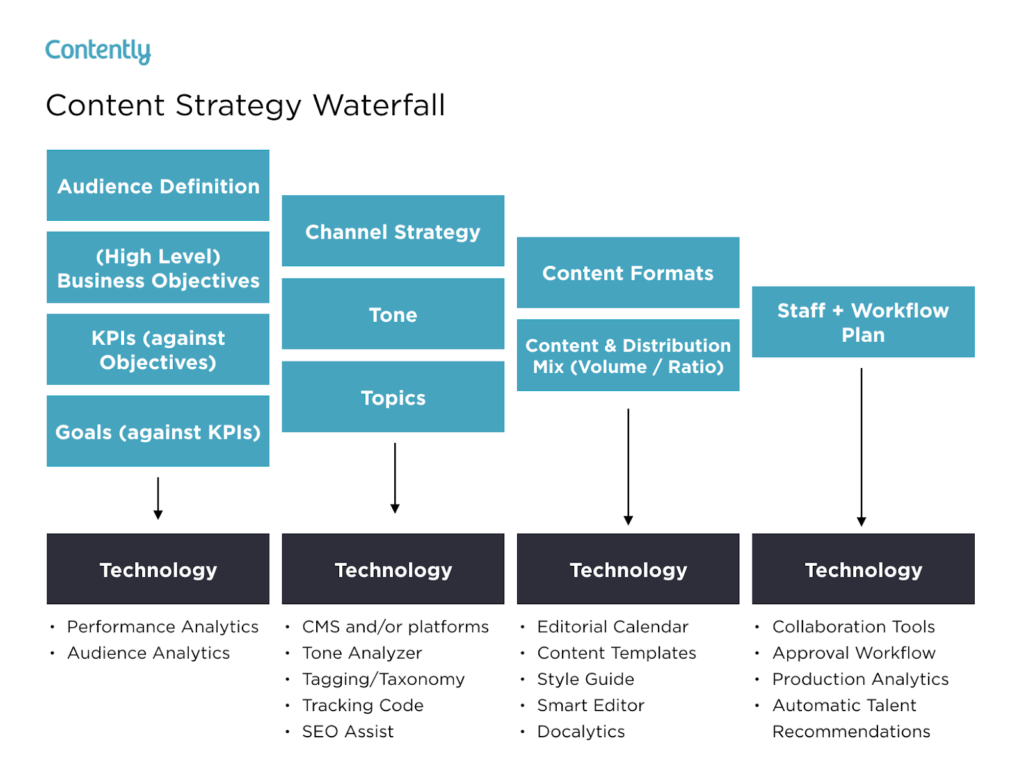
20. Quora
This content distribution platform helps you to share your brand expertise in the form of answering questions. The best place to ask questions and find a range of answers is Quora. You can ask questions on any topic on the planet and have experts give short, detailed, and informative answers. You can also share your knowledge on Quora, which helps build your online community. This content distribution platform enables you to share your brand expertise by answering questions.
21. Reddit
Reddit is the web content distribution platform where most people go when searching for informative content on any topic on the internet. The posts are shared through subreddits, exclusive communities that exchange notes on industry-related topics. Find a subreddit relevant to your domain, exchange notes with like-minded people, and share content. The best content is regularly voted and appears on the top of the pages, leading to more shares.
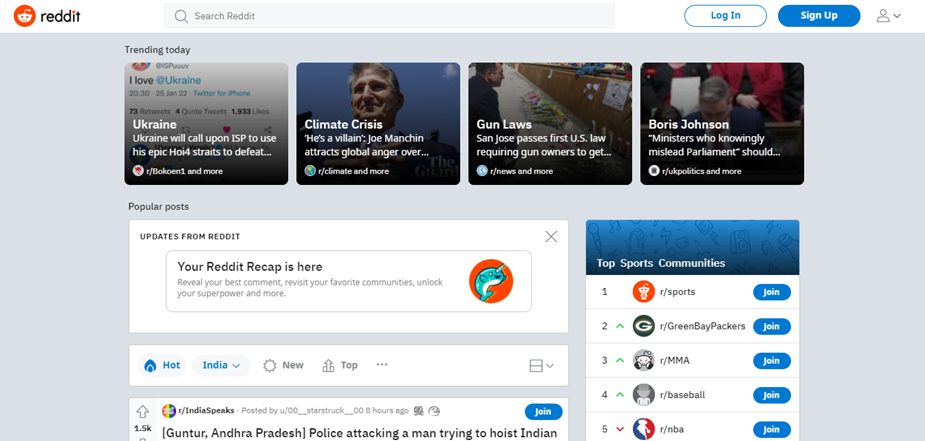
22. Outbrain
Signing up on Outbrain gives your content a great head-start through links that connect your content to other articles. You can aspire to distribute your content through reputed publishers such as CNN, ESPN, Wall Street Journal, etc. Outbrain is one of the best-automated content distribution channels in place that helps your content reach the appropriate audience as it gauges their interest and stores the information. As a result, your content finds niche audiences and gets shared among like-minded people.

23. Taboola
Taboola is a popular content discovery platform with a billion unique visitors who view a large repository of content recommendations. The tool helps you share your content on leading publisher sites such as the Chicago Tribune, Business Insider, USA Today, and more.
Taboola helps your brand reach a wider audience as it uses the clickbait technique, which sends the users to the website from where the content originated. Visitors seeking solutions to specific problems are attracted to the “Recommended For You” section.

24. Nativo
Nativo is associated with several prestigious publisher sites. With over 400 sites linking to Nativo, this native advertising tool is one of the best to use in your content distribution strategy to boost conversions. Using this tool, you can have a CTA button that leads readers back to your website.
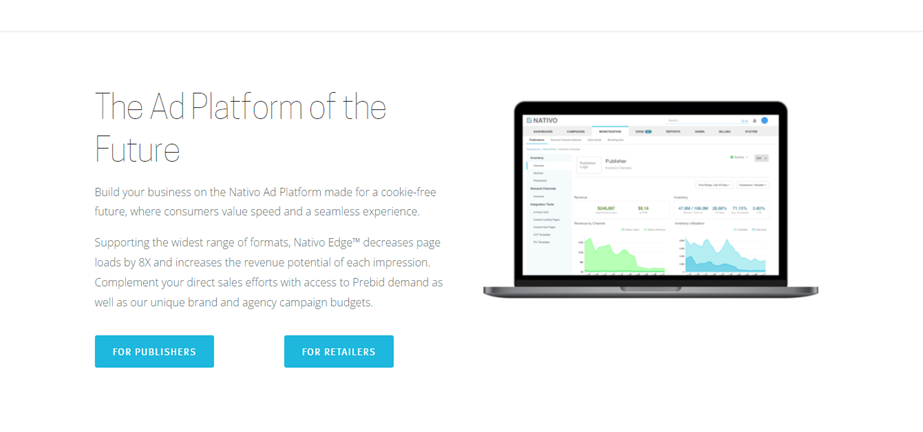
25. Mix
Earlier, StumbleUpon, Mix specializes in finding great content across the web. This content distribution tool works on social networking principles and sources specific content users are looking for by describing their requirements.
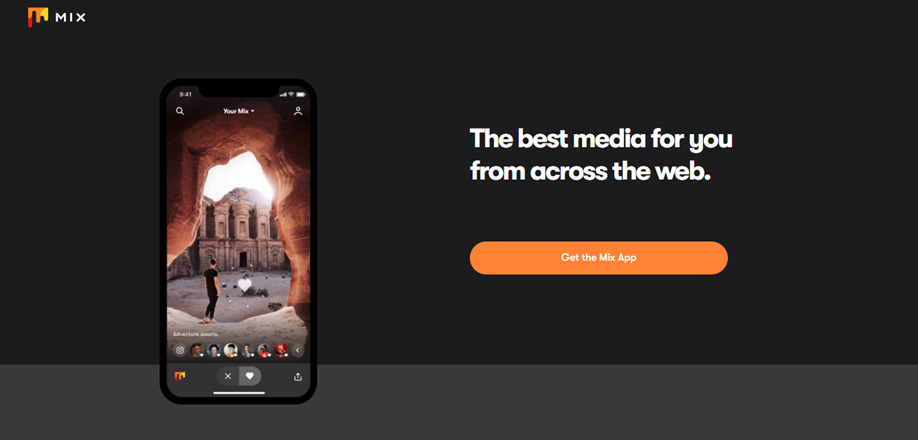
26. Triberr
Triberr is a great content distribution tool that serves as a bridge between brands and influencers. Influencers are delighted when they find other influencers creating great content. This content distribution platform helps professional influencers drive traffic to their content and expand their audience base.

27. HubSpot
HubSpot is one of the best tools for automating your content distribution plans. You can combine all your social media accounts, posts, contacts, CTA content, and more to make an effective marketing and distribution strategy. The tool also lets you schedule updates to reach multiple users on various social media platforms.

28. Sprout Social
A content distribution tool similar to Hootsuite and HubSpot, Sprout Social offers a content calendar to help you and your team plan social media posts jointly. Updates can be modified and reviewed by your team before they are published. You can also track and analyze your campaign performance and quantify outcomes with various reporting tools.

29. GaggleAMP
GaggleAMP is a valuable content distribution tool for large businesses with a high employee count. You can use this tool to send notifications to employees, urging them to share content whenever it appears, and participates in all online activities related to content distribution. All members can repost your content.
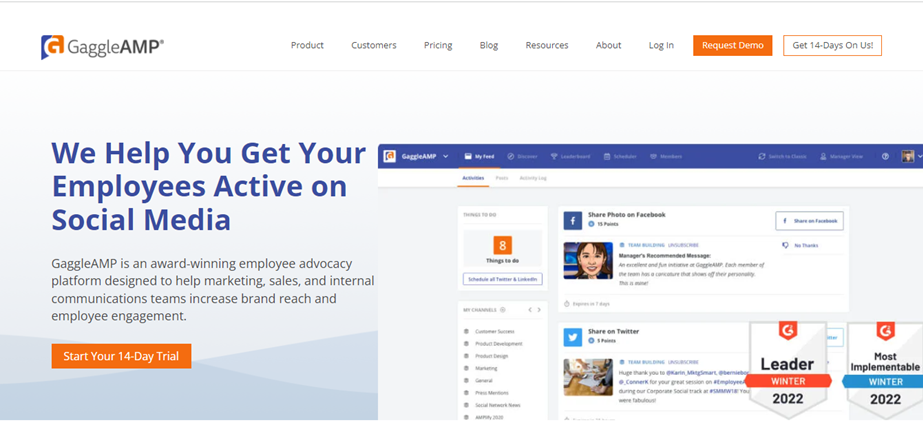
30. SimpleReach
It is probably the best content distribution tool that helps you achieve outcomes by optimizing your content distribution system. It enables you to modify your content by tracking social behavior. You can measure your performance in real-time by using analytics tools and identifying the content that drives the most traffic.
31. Zemanta
If you like your content to be indexed, recommended, and sponsored as links on other websites, Zemanta is the best tool to use. An Outbrain company, this AI-powered tool lets you manage your optimization process efficiently. The tool uses analytics to measure metrics, helps enhance engagement, and reduces bounce rates.
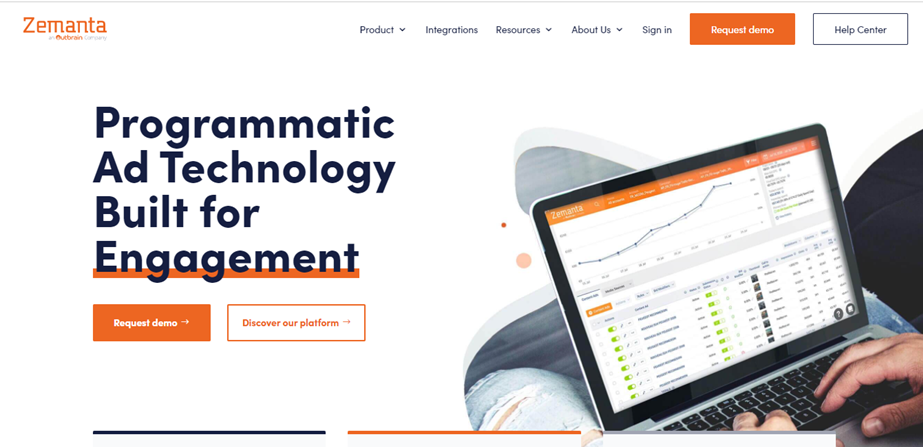
32. Oktopost
Oktopost is a content distribution tool specially created for B2B social media posts; it distributes and manages them efficiently. The tool is efficient and lets you know the platforms that generate new customers and the performance metrics of each post. You can schedule posts to all social media platforms, such as Twitter, Facebook, and LinkedIn, under as many profiles you choose to have.
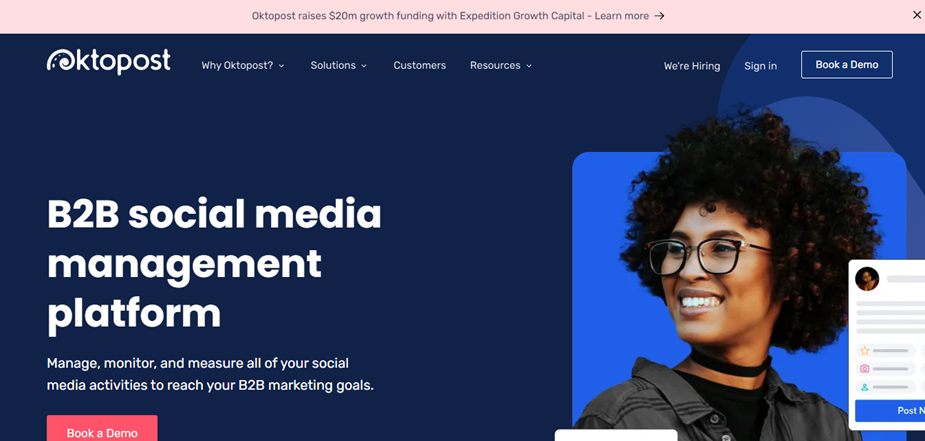
33. Zapier
Integrating this tool with social networking platforms allows you to automate the process of content distribution. Zapier lets you coordinate tasks and control events by turning them on or off as required. It helps you save on time by performing a range of functions for you: offering thousands of templates, notifying you about form submissions, organizing and tracking leads, and more.

34. Adblade
Adblade is a top native advertising platform that helps you access hundreds of leading websites to promote your content. It is a popular content distribution tool used by leading companies. It is one of the best tools for targeting audiences without using algorithms. You can also retarget users with this tool.
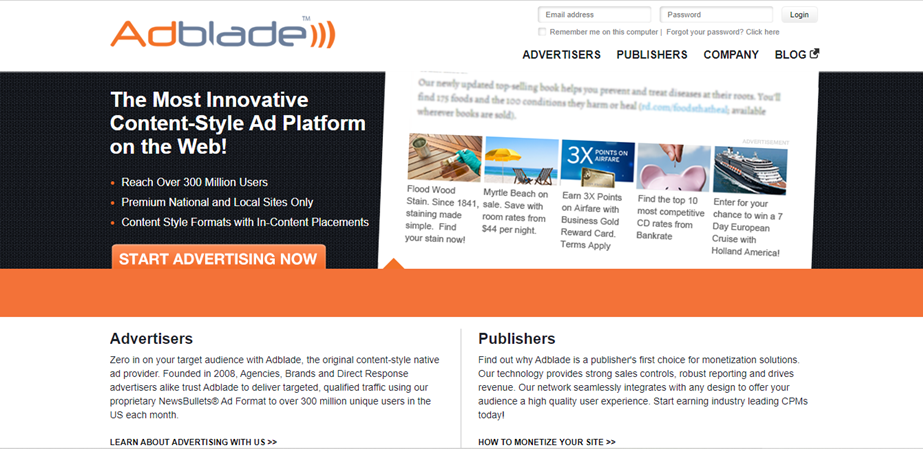
35. Facebook Sponsored Posts
Advertisements on social media work better because they generate more engagement from a niche audience. The click-through rates are also much better when compared to traditional forms of advertising, such as banner ads.
Sponsored posts on Facebook are paid posts that help increase your brand’s reach and visibility. These are usually created on your business page and help engage users immensely. You have the liberty of selecting specific posts and paying for just those, and they will be delivered to niche audiences.
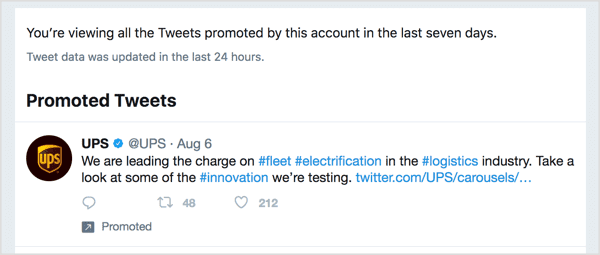
36. Promoted Tweets
Did you know that there is a paid option for getting your Tweets to reach a wider audience? Your Twitter Ads dashboard lets you promote specially created Tweets with a select audience. The recipients may already be in your stream and could have missed your earlier Tweets. Hence, this is a valuable content distribution tool to gain your audience’s attention.

Key Takeaways
- Content distribution is a crucial aspect of content marketing as it is the key to boosting your followers count.
- Content distribution directly impacts brand awareness, in turn exposing your content on social media platforms and fostering engagement.
- Content distribution channels can be categorized into three groups: Paid, Owned, and Earned Media.
- Paid content distribution platforms, like its name, distribute content for explicit pay. A pay-per-click model is in place here.
- Owned content distribution tools are mostly in-house content like blogs, email newsletters, social media posts, and other products distributed on the host website or other platforms.
- Earned content distribution channels mean distributing content through third parties like reviews, retweets, press coverage, guest postings, etc.
- Edgar, Wise Stamp, Goodbits, and SumoMe are content distribution tools to promote your content on multiple platforms.
- You can use automated content distribution to promote your content by automating your email newsletters. Then, you have to connect it to content marketing platforms to distribute.
- Web content distribution means promoting your content to online users in multiple formats. Bite-sized video content is the most popular form, followed by gifs and static pictures.
- Brands need content distribution platforms, as users need to find and engage with your content.
- Some of the best content distribution platforms include Buffer, MeetEdgar, Mailchimp, WiseStamp, Reddit, Quora, Facebook, Twitter, etc.
Conclusion
In todays’ time, where content is king, content distribution channels form a crucial aspect of content marketing. There is no point in creating content that your target demographic does not get to see. In summary, it is advisable to select the tools that best suit your specific needs. Most of the tools have inbuilt analytics to measure performance metrics, helping you tweak your distribution efforts to gain maximum benefits.
Today, content creation and distribution rely greatly on tools; hence, it pays to remain updated on how the best content distribution platforms work. Identifying your niche audience is still the most crucial aspect of content distribution, as it helps your content reach the relevant people.
FAQs
Besides looking for the best content distribution platforms, you should research your target audience, which begins by identifying and creating your buyer persona. Before publishing your content, make sure you audit it. Also, be choosy while selecting your content distribution platforms. Regardless of the content distribution strategy you choose, you should always decide on your key performance indicators (KPI) and goals. Don’t forget to create an editorial calendar before crafting your content and distributing it.
There are many success stories, two of which include Coca-Cola’s “Share a Coke” and Open, Buffer’s blog. Who can forget Hootsuite’s campaign that alluded to Game of Thrones? Other examples of content distribution campaigns include Microsoft Story Labs, inbound marketing by HubSpot, and the wildly popular “Our Food, Your Questions” by McDonald’s.
A content distribution strategy is a marketing team’s distribution template to aid its marketing activities. This can include promoting ebooks, blogs, whitepapers, case studies, images, videos, and more. In tandem with a good distribution strategy, you can choose a suitable content distribution platform to ensure that your content reaches the target audience.
Start by setting clear goals. Determine your target audience by identifying your buyer persona. Brainstorming content ideas can help you create fresh, engaging content that resonates with your audiences. Research your keywords and use the appropriate ones to increase traffic to your website. Make sure that you use the best type of content that’s relevant to your products and target audience.
First, create the appropriate type of content, which depends on the goals you have set for your brand. Pick the right people to share your content with, and distribute it at the right time. It makes sense to use influencers who can persuade their fans and the general public because of their clout. Make good use of social media, and spread your content amongst different content distribution platforms.
Content distribution is the process of distributing content to the target audience. Selecting the best content distribution platform ensures that your content reaches the right people at the right time. A content distribution platform is a tool marketers use to circulate content far and wide. There are many content distribution platforms, and more are emerging with every passing day. However, they all fall in these three categories—owned media, paid media, and earned media.
Latest Blogs
Learn how to rank on AI search engines like ChatGPT, Perplexity, and Gemini by optimizing your content for authority, structure, and relevance. Stay ahead in AI-driven search with this strategic guide.
Explore the best healthcare SEO services for your medical practice. Improve online visibility and effectively reach more patients in need of your services.
Discover top social media agencies specializing in banking solutions, enhancing financial services and driving engagement.


